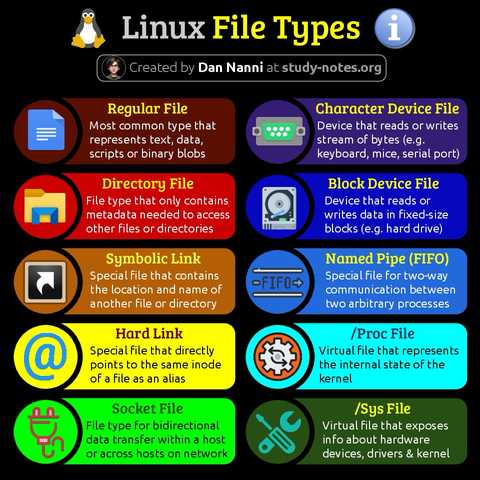In Linux, file types define how the kernel recognizes and interacts with files, influencing actions such as reading, writing, and executing them within the filesystem
Here are a list of available file types on Linux 😎👇 #sysadmin #devops #opensource
Find high-res pdf books with all my #Linux related infographics at https://study-notes.org
